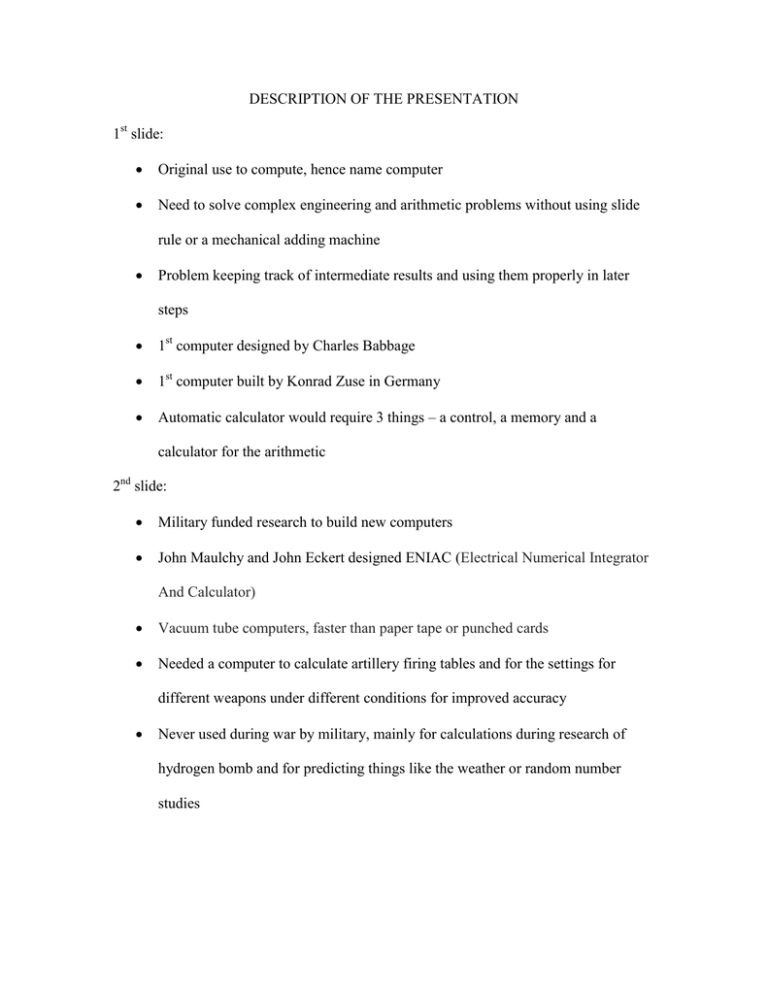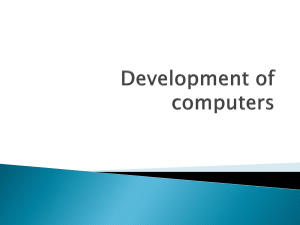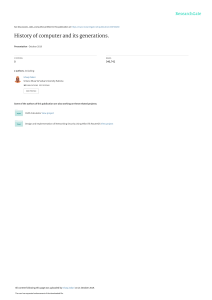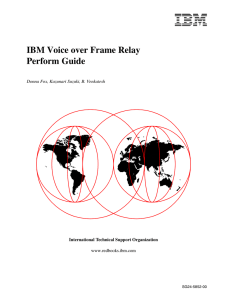to view its description
advertisement

DESCRIPTION OF THE PRESENTATION 1st slide: Original use to compute, hence name computer Need to solve complex engineering and arithmetic problems without using slide rule or a mechanical adding machine Problem keeping track of intermediate results and using them properly in later steps 1st computer designed by Charles Babbage 1st computer built by Konrad Zuse in Germany Automatic calculator would require 3 things – a control, a memory and a calculator for the arithmetic 2nd slide: Military funded research to build new computers John Maulchy and John Eckert designed ENIAC (Electrical Numerical Integrator And Calculator) Vacuum tube computers, faster than paper tape or punched cards Needed a computer to calculate artillery firing tables and for the settings for different weapons under different conditions for improved accuracy Never used during war by military, mainly for calculations during research of hydrogen bomb and for predicting things like the weather or random number studies War was over by time it was finished, but still provided useful in other areas like the building of the hydrogen bomb, weather prediction and random number studies 3rd slide: Transistors were next step in moving toward the modern computer we have today Faster than vacuum tubes and easier to maintain Acted as a transmitter converting sound waves into electronic waves, and resistor, controlling electronic current 4th slide IBM already big in punch card technology Produced 1st commercial transistorized computer – previous computers had been used by government agencies and military Released a series of general purpose computers called the IBM 700 series Came out in late 1950s, development slowed after production of IBM 7090 Fastest computer of its time and considered the super computer of its time IBM has controlled the history of computers for the majority of the past half century 5th slide: Next major development came in 1981, when IBM released it’s 1st personal computer, called IBM PC In discussions with Microsoft to create an operating system for the PC Microsoft products like Word and PowerPoint Used the integrated circuit which was a large number of tiny transistors on a circuit board Development of Integrated Circuit lead to most of the technology we have today in computers 6th slide: Wrap up slide Whatever society has needed or wanted from computers has influenced growth and development Society has need to be “in the know” at all times and on the go so laptops developed to meet the needs of society Great increases in speed, storage, and memory Increased networking, speed in Internet Widespread use of CD-RW





